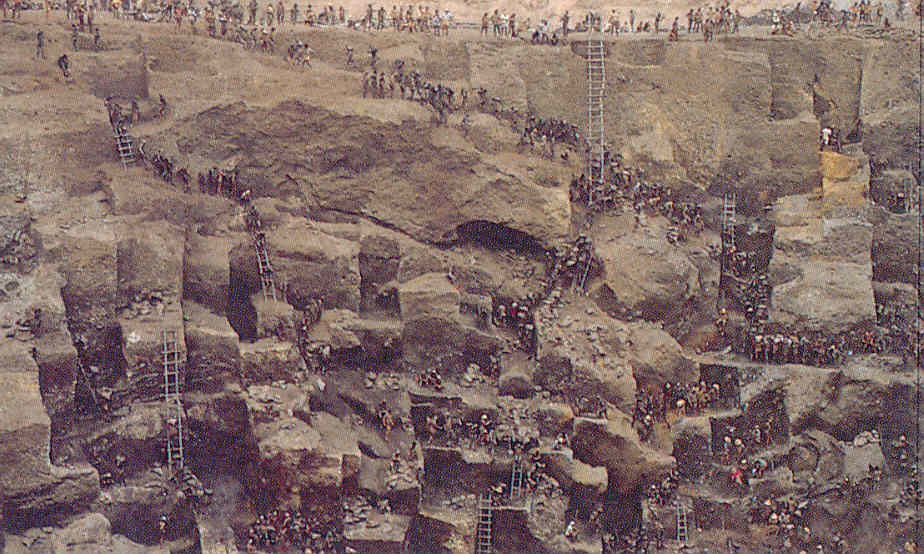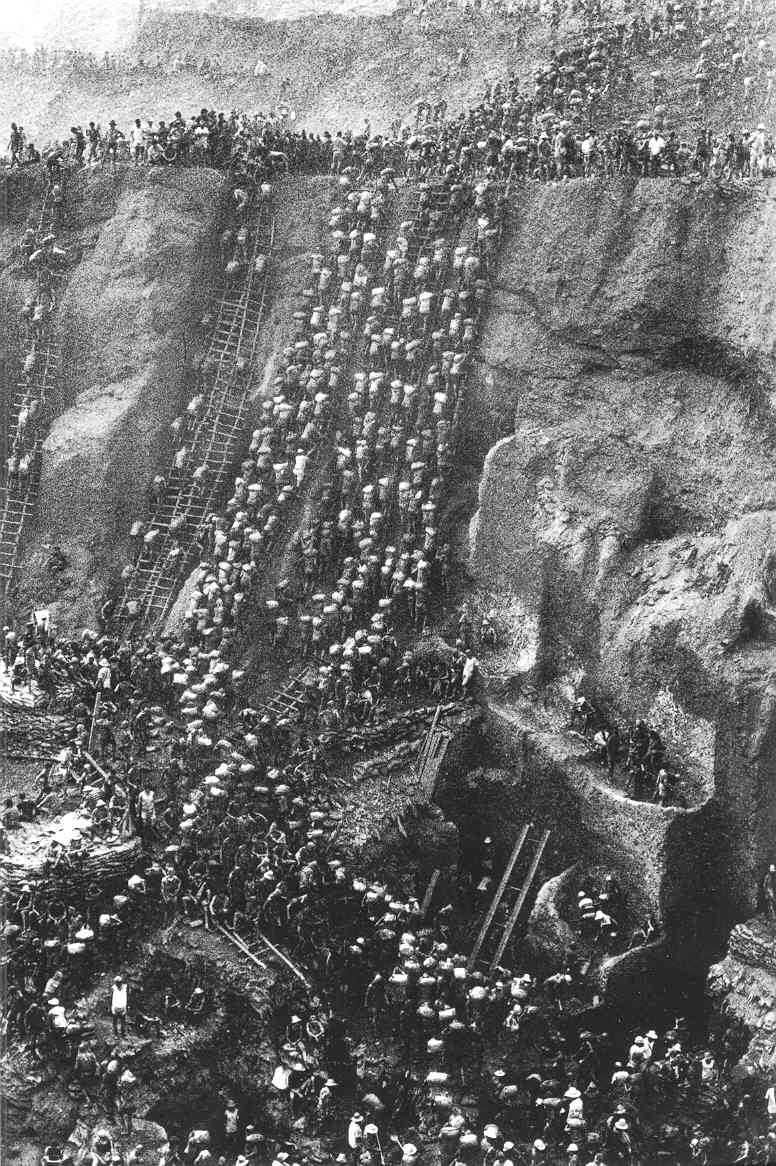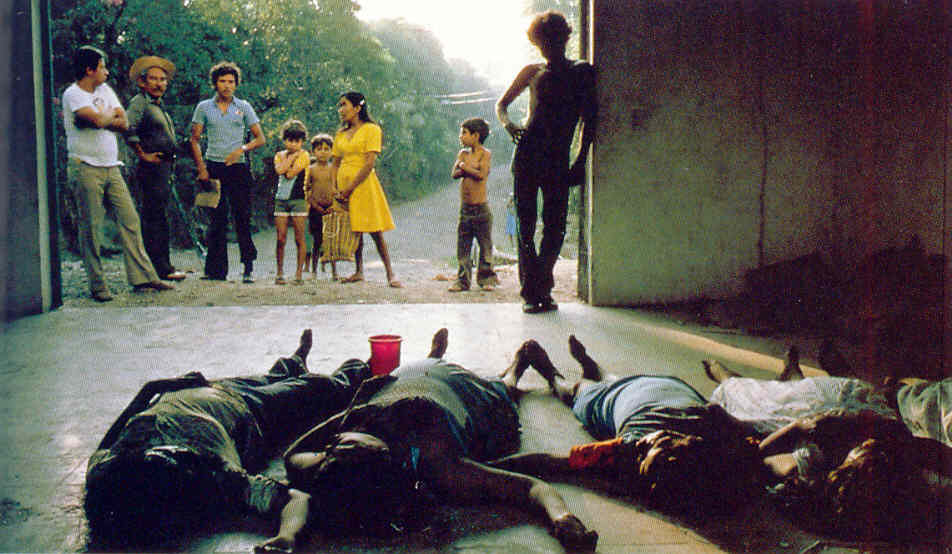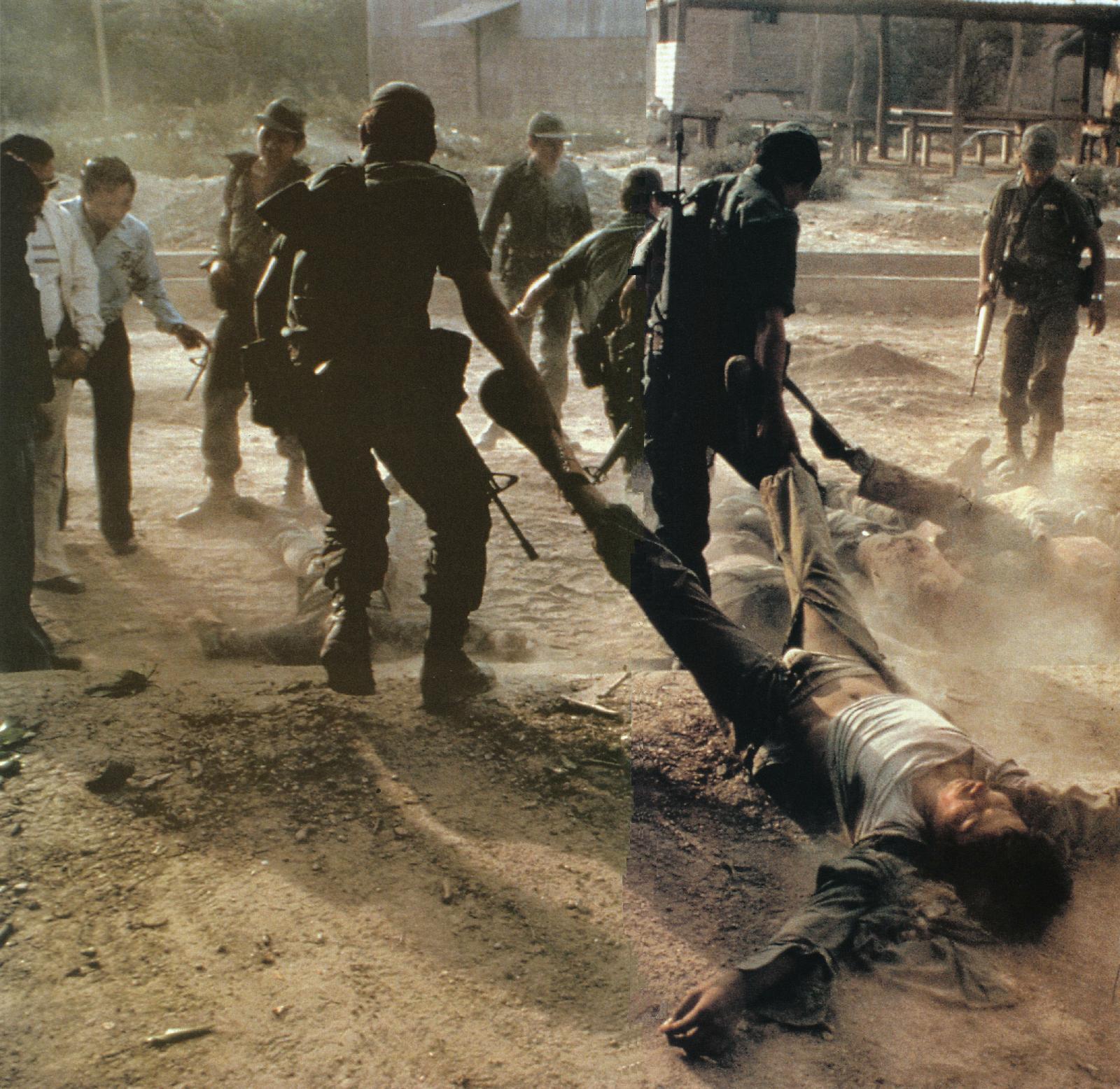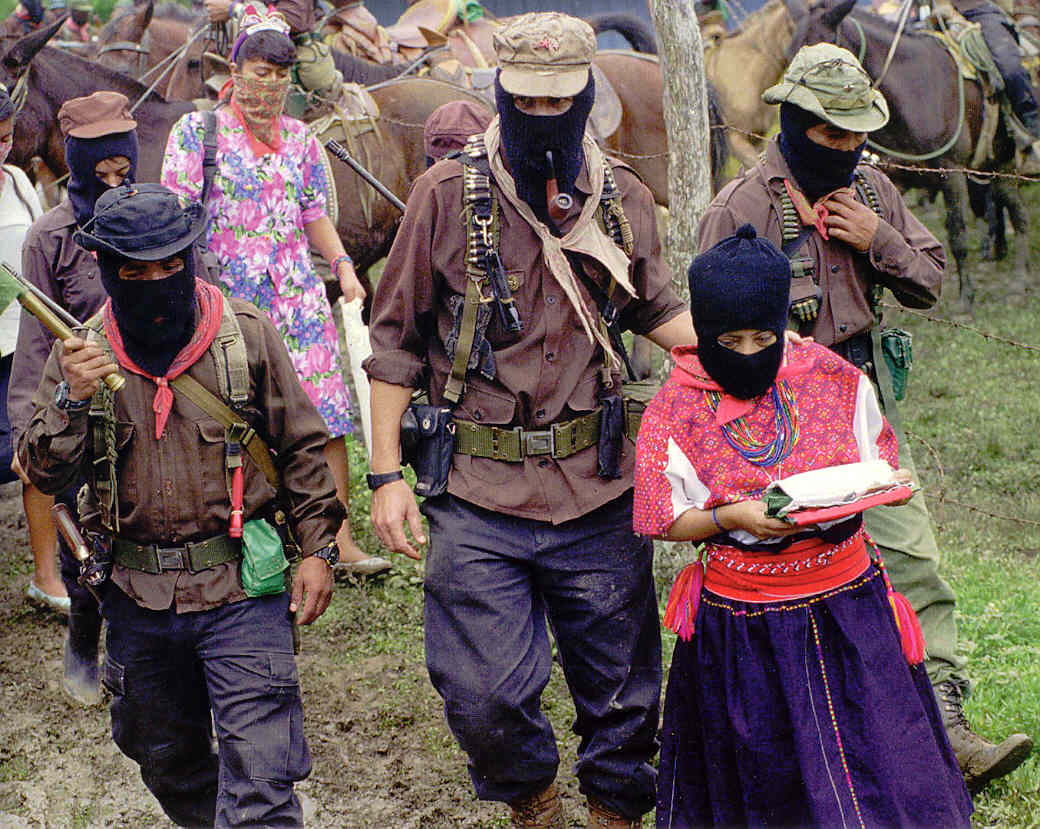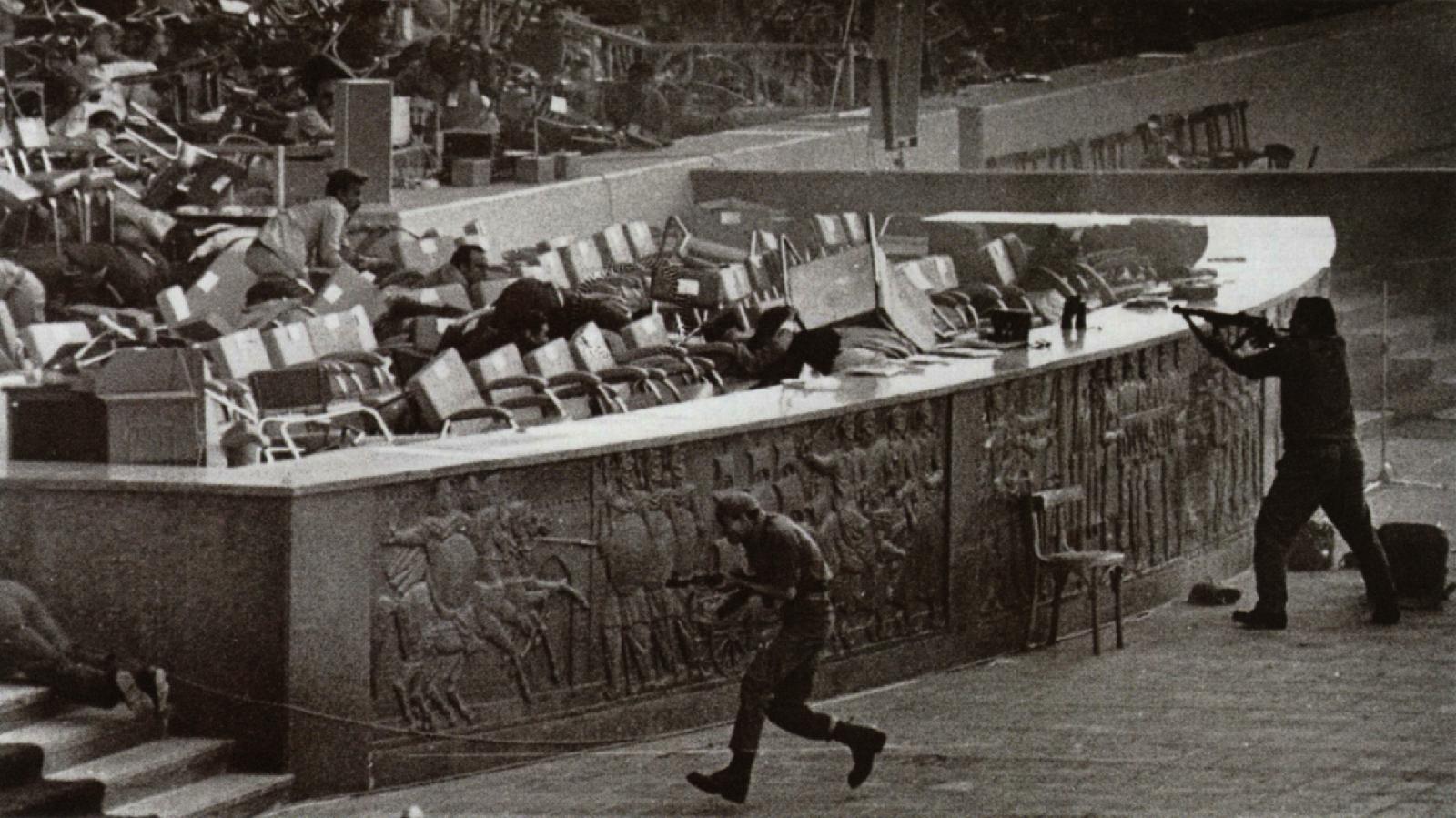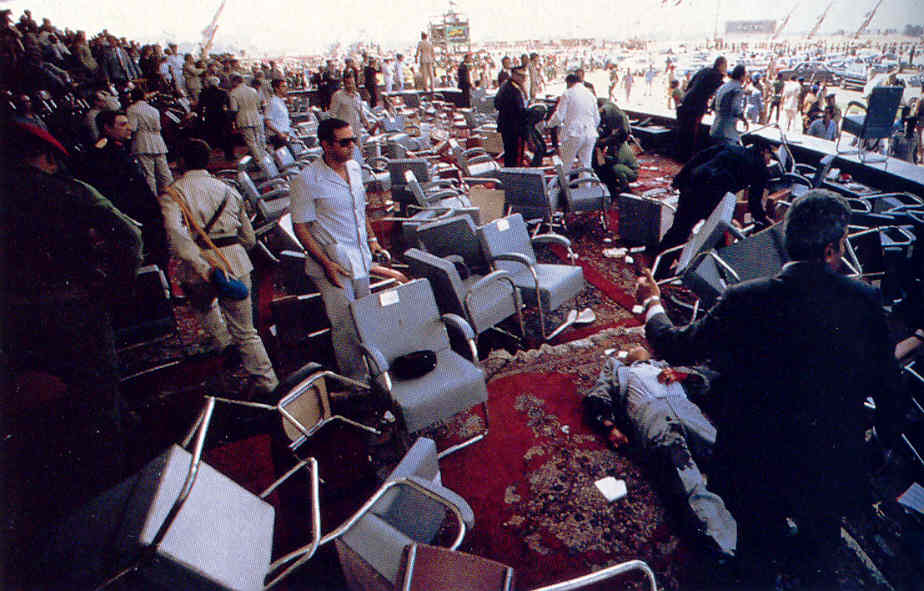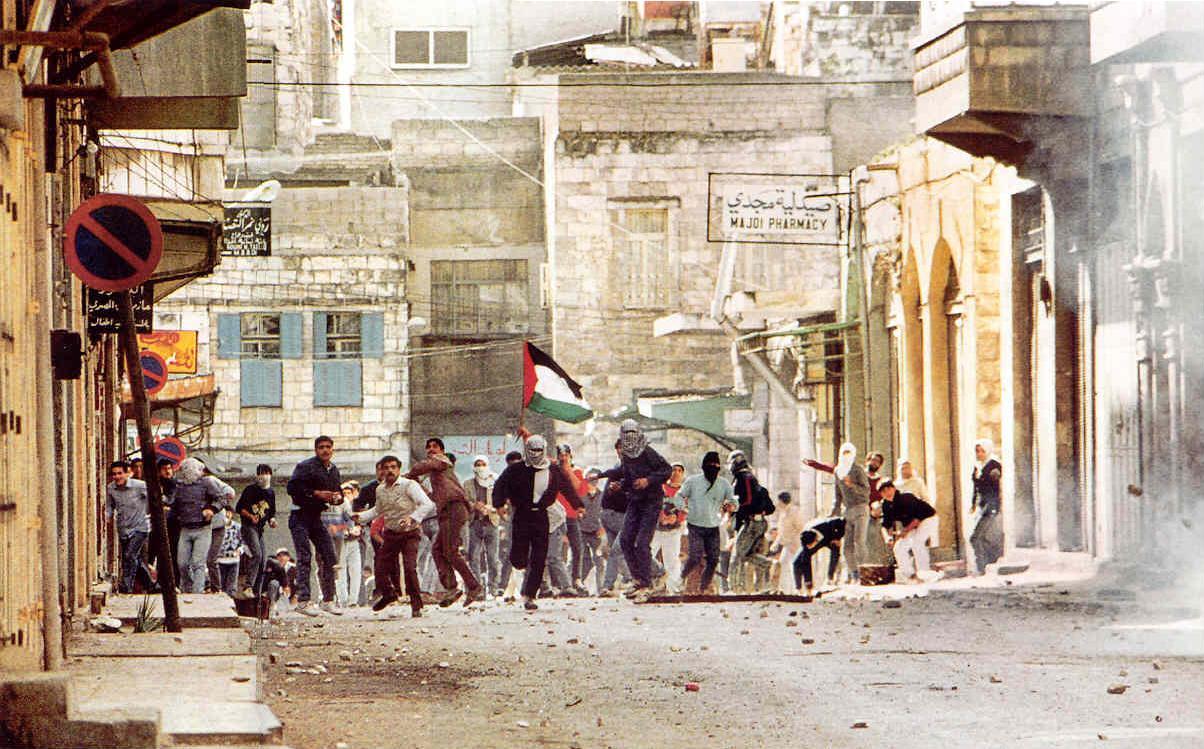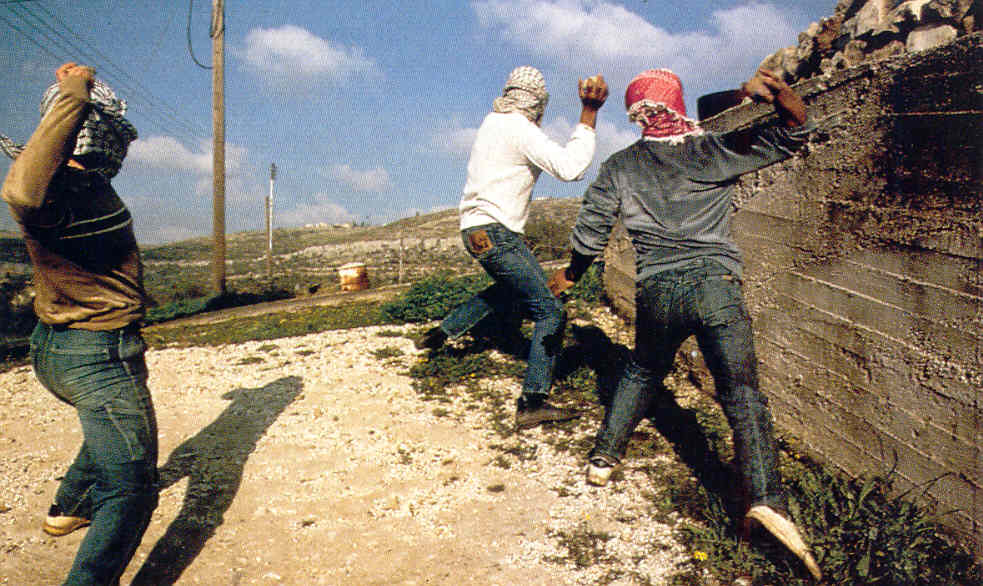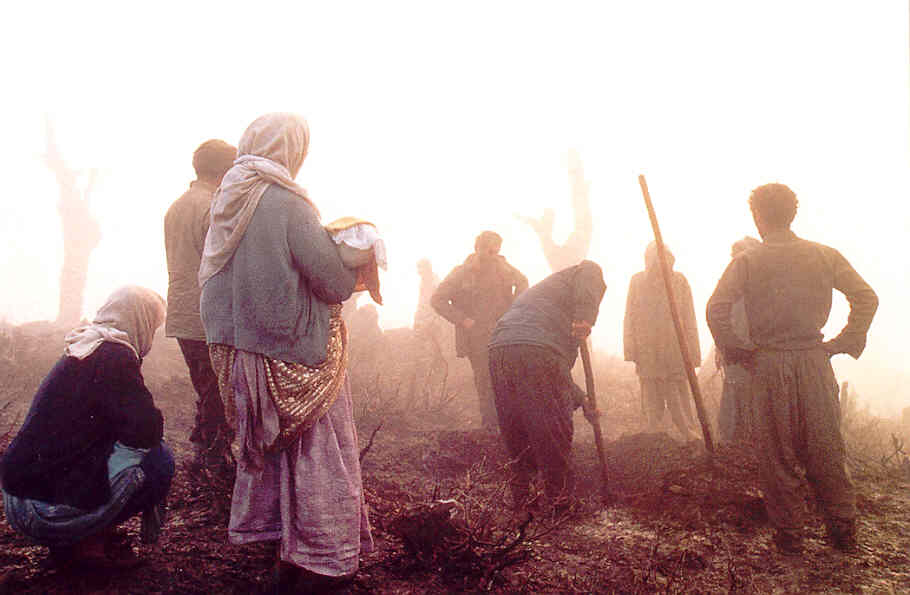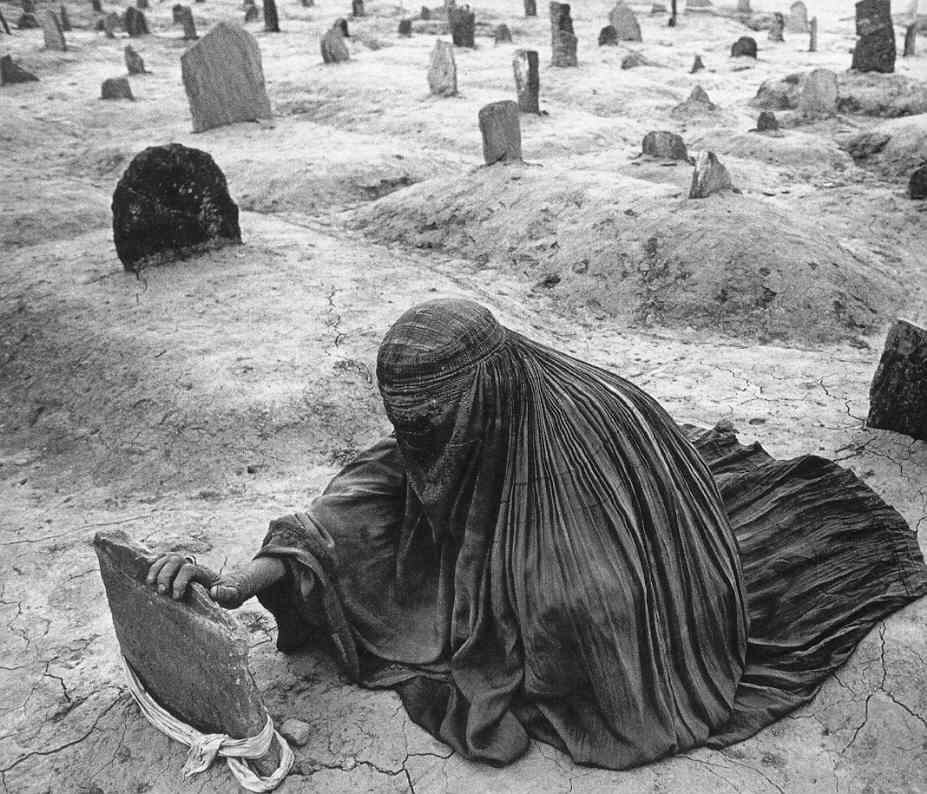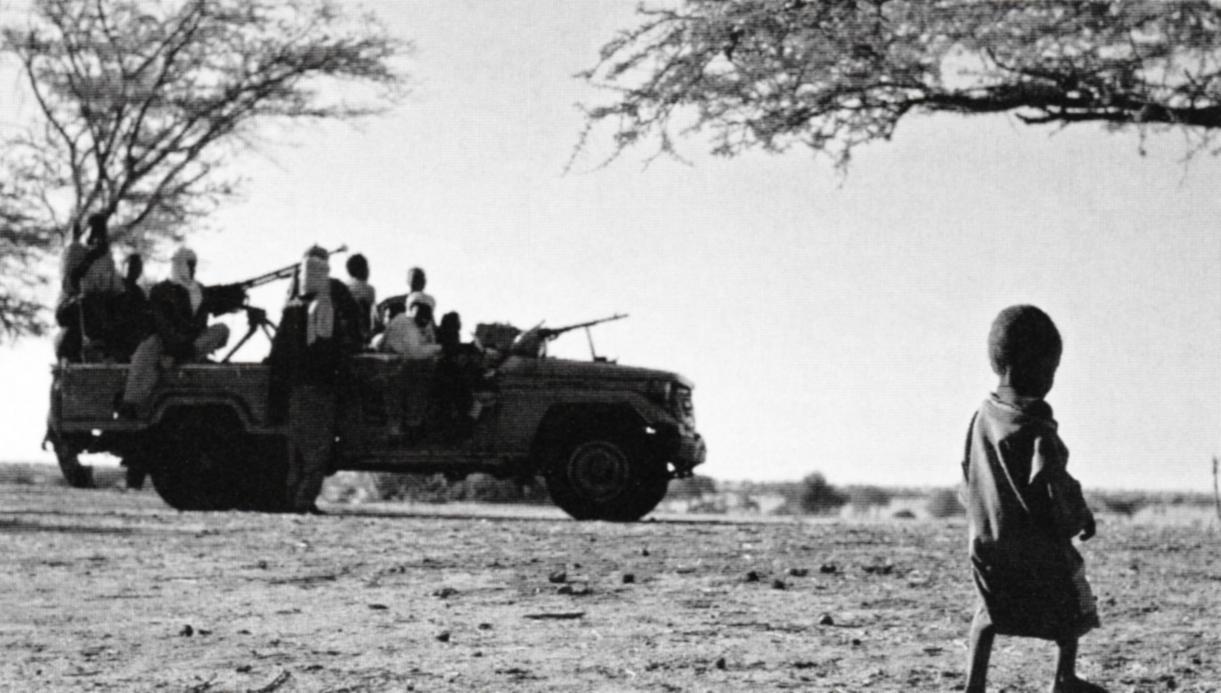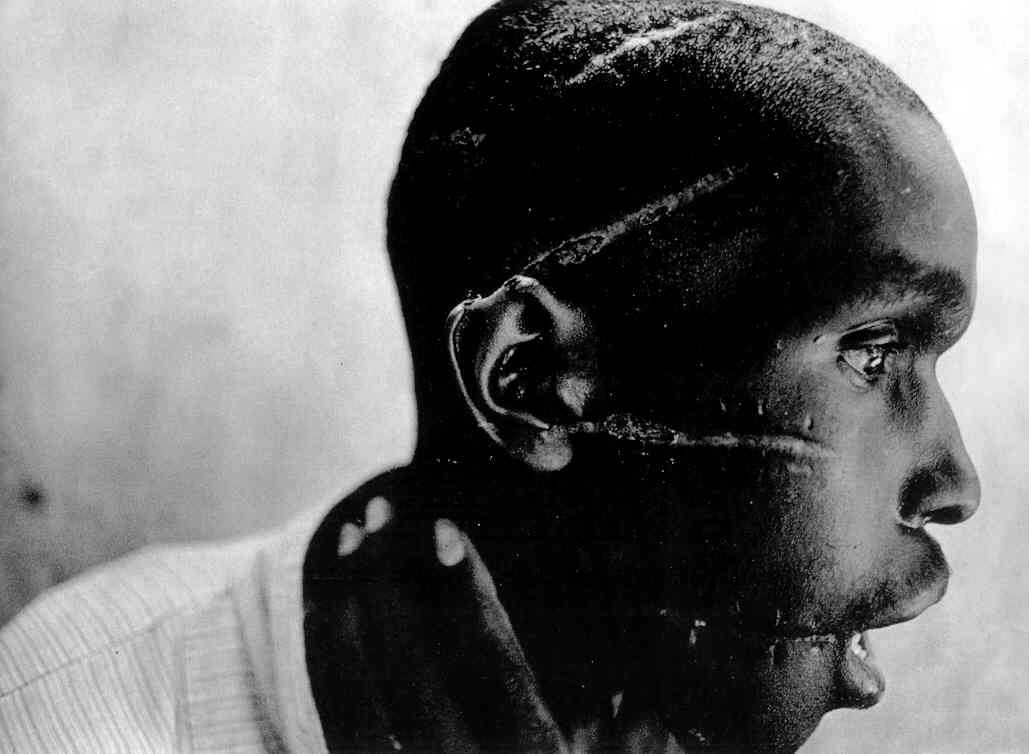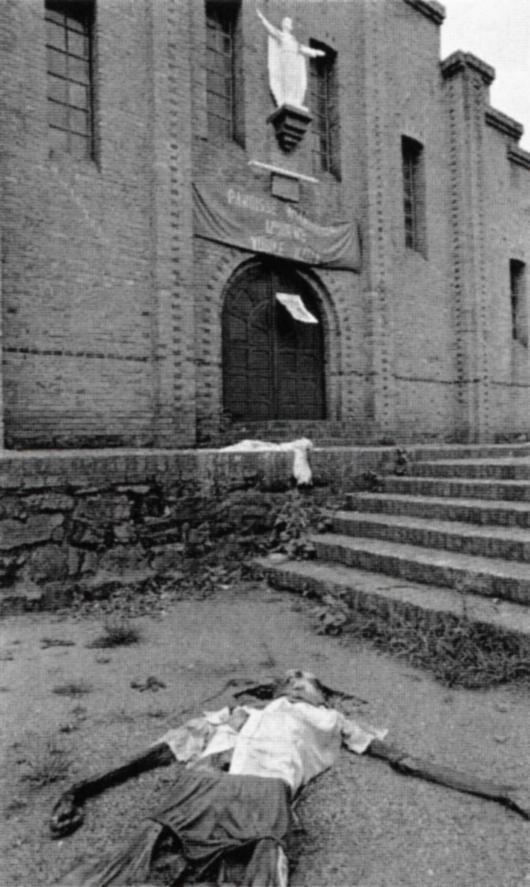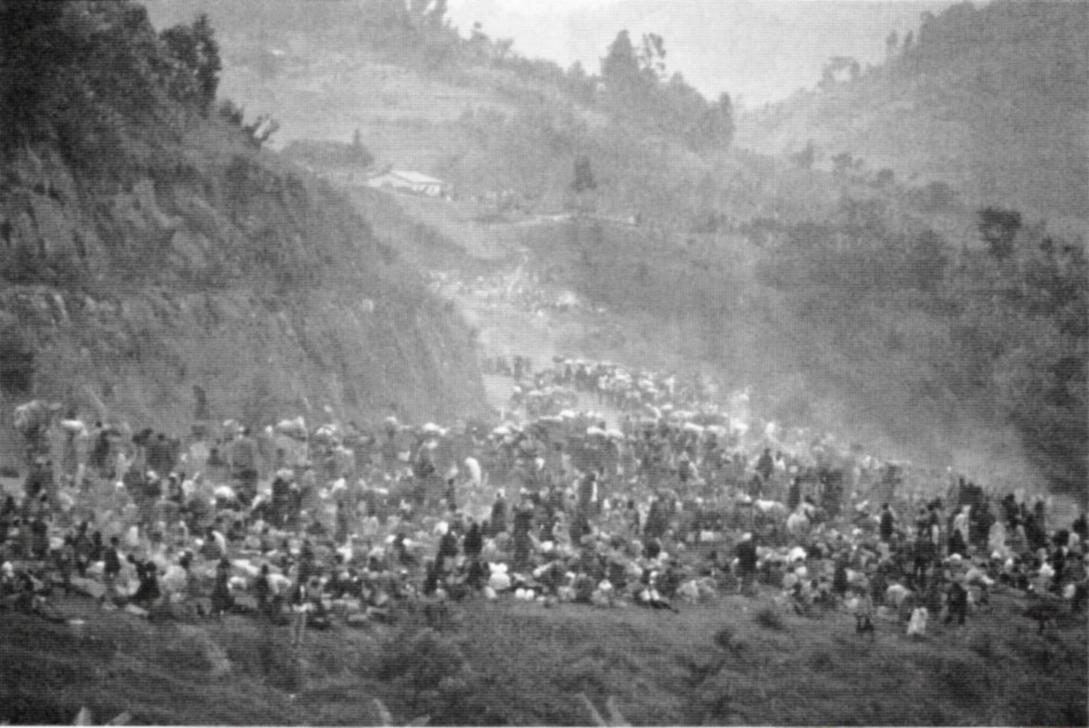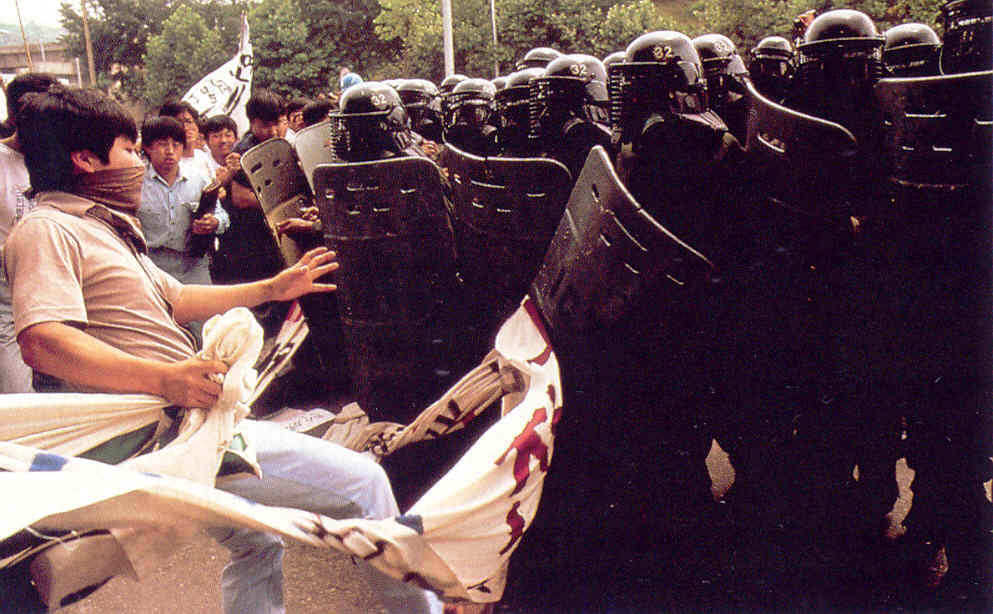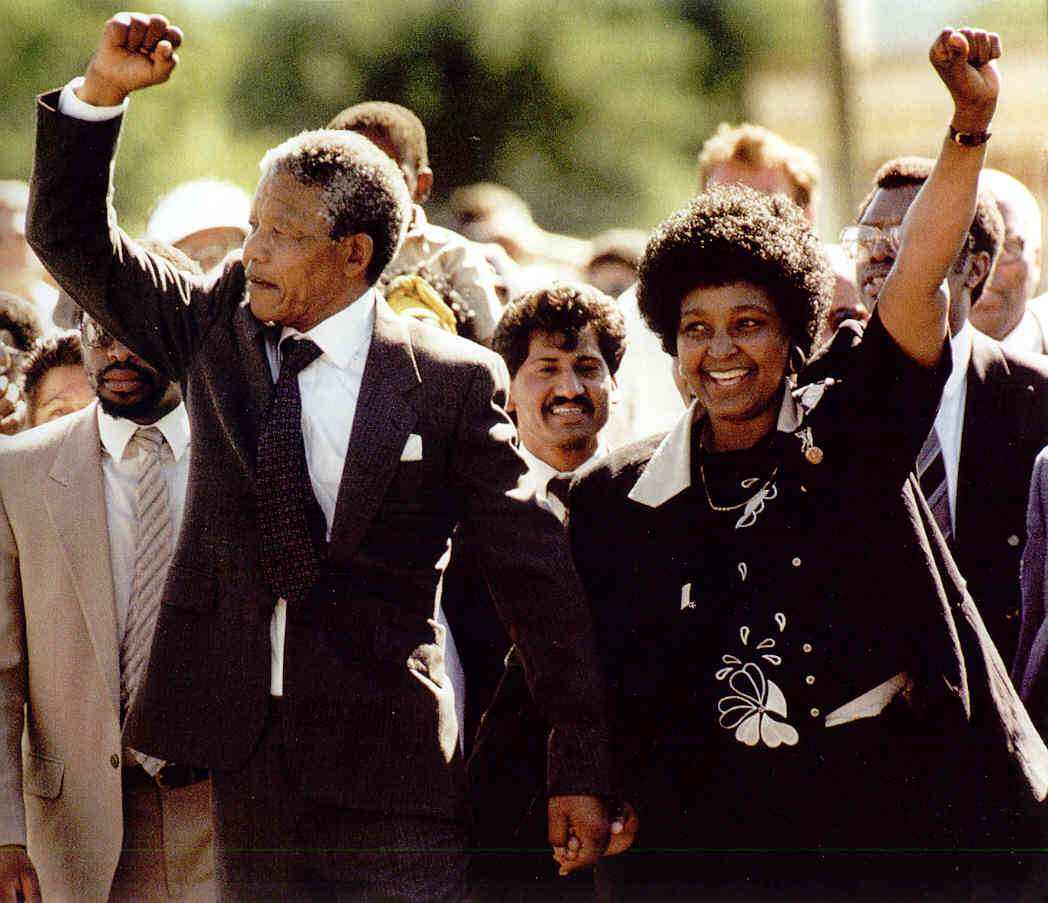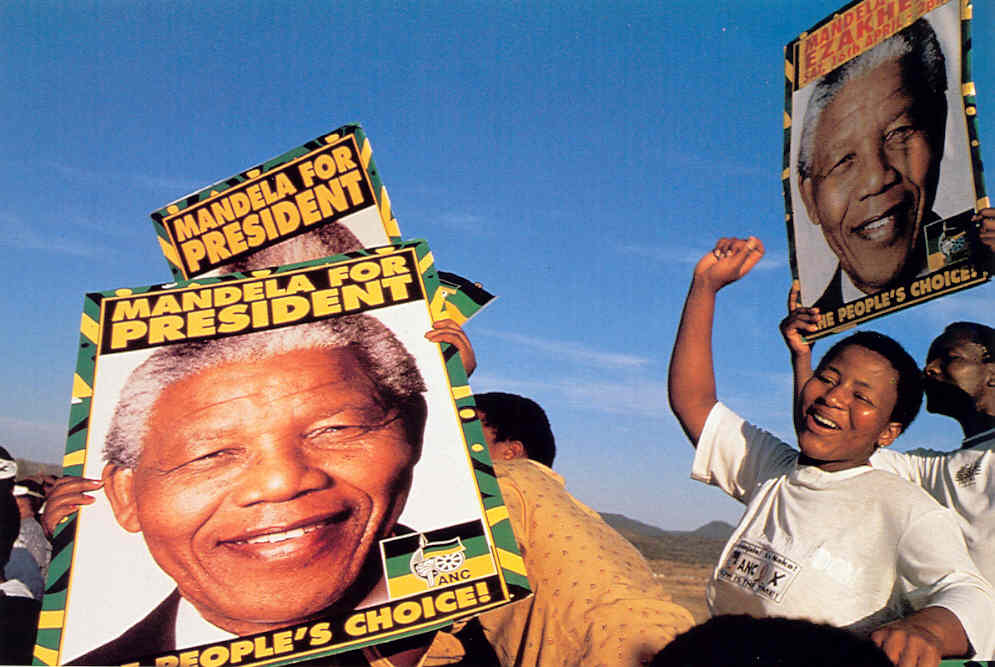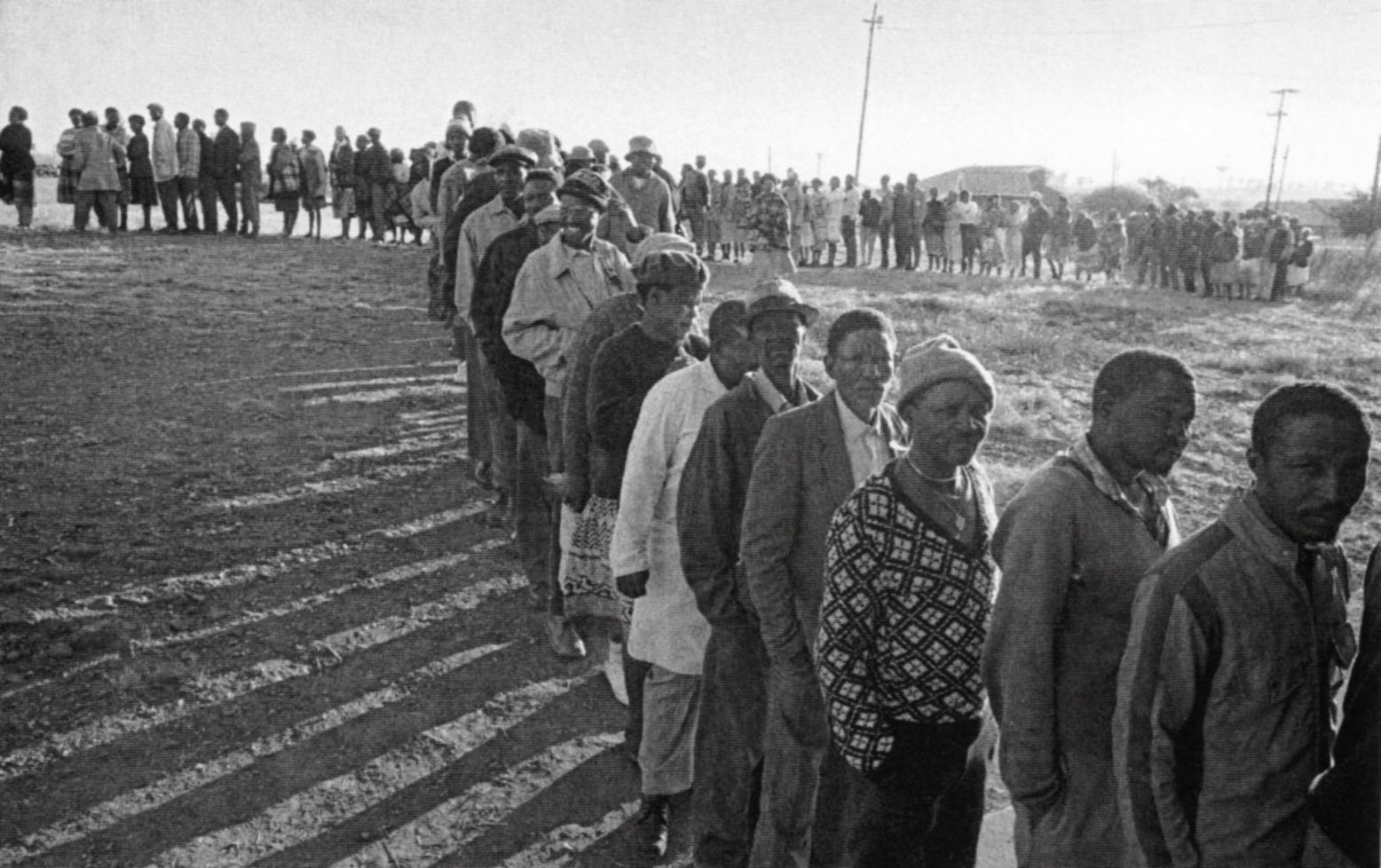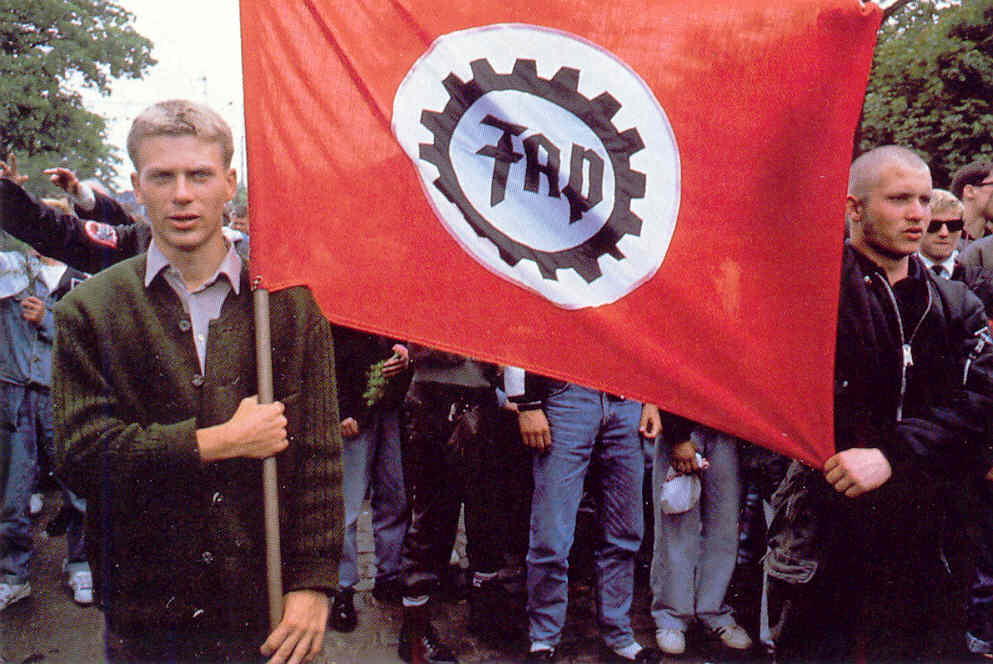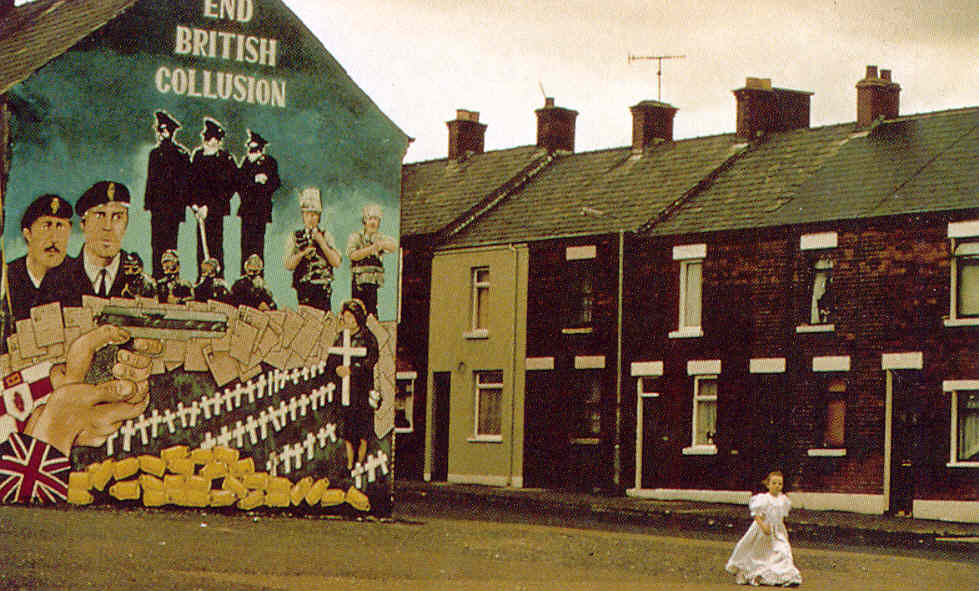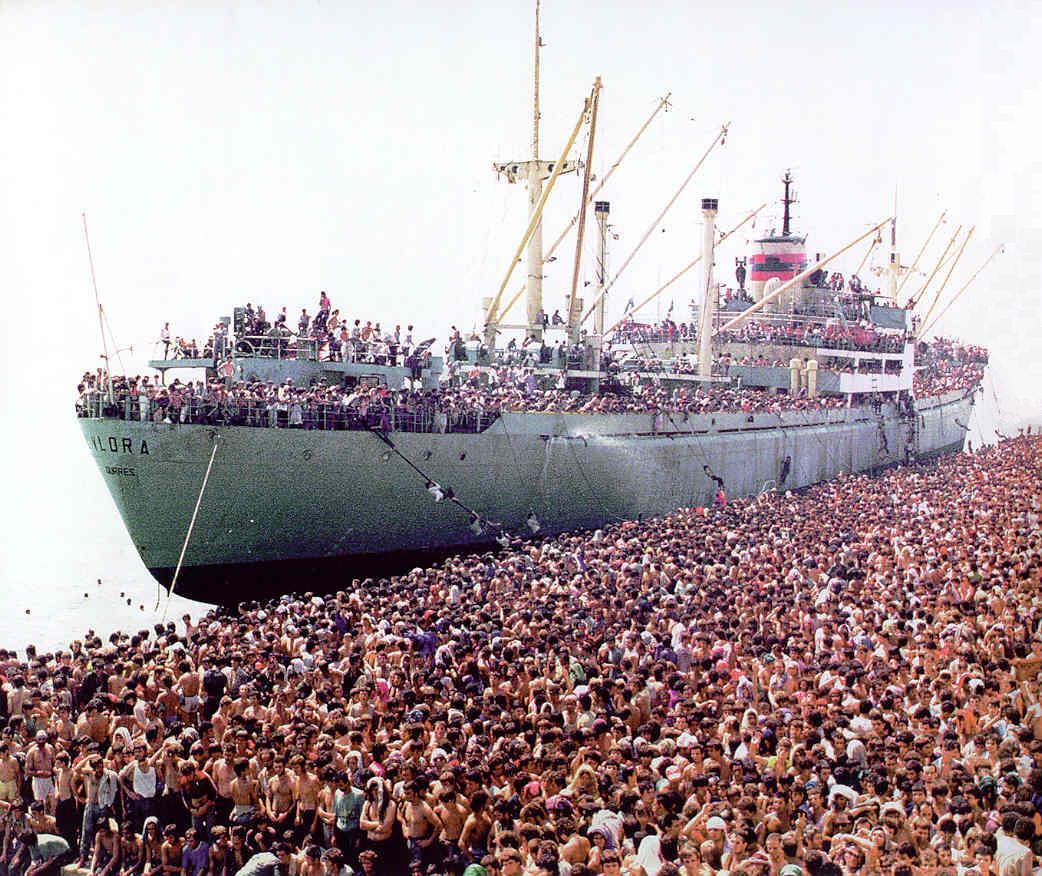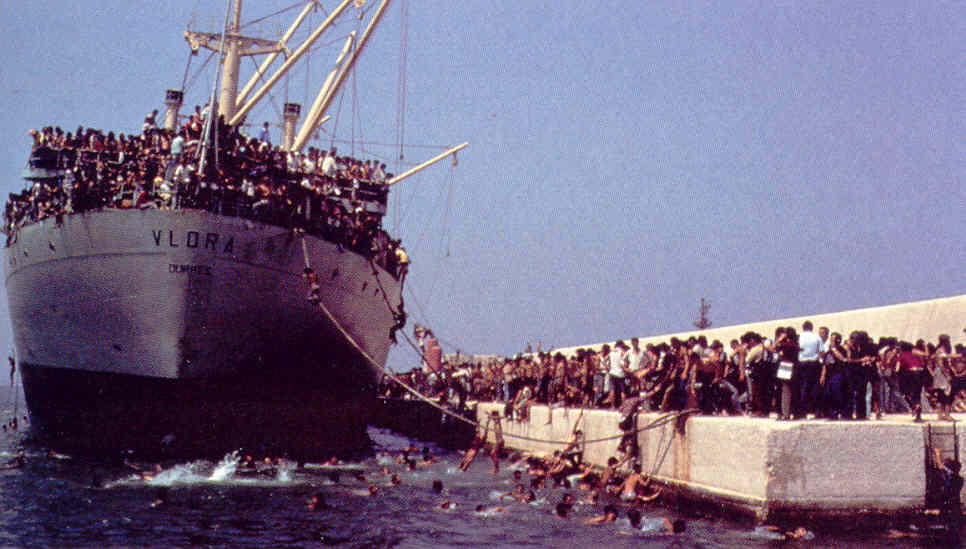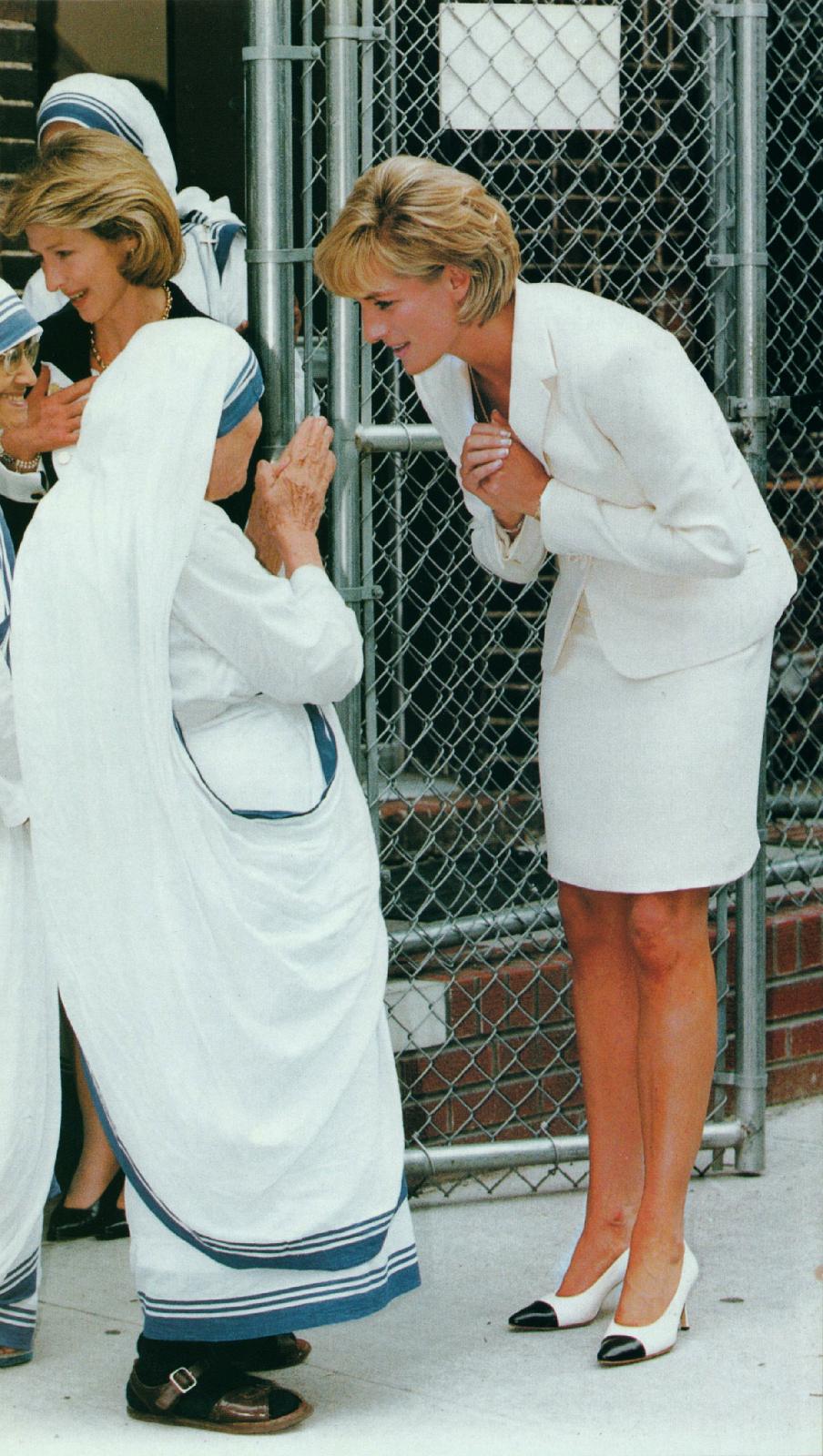20. PEACE


PROBLEMS IN THE REST OF THE WORLD
 Age-old cultural-economic problems
Age-old cultural-economic problemstrouble Latin America
 The Middle East remains a region of
The Middle East remains a region of
turmoil
 Africa remains no less a sad continent of
Africa remains no less a sad continent of
ethnic strife
 Hindu-Muslim ethnic hostilities in the
Hindu-Muslim ethnic hostilities in the
Indian sub-continent
 Democracy in trouble in the Philippines
Democracy in trouble in the Philippines
– and even in South Korea
 South Africa begins an amazing
South Africa begins an amazing
transition from White to Black rule
 Ethnic tensions even challenge Europe
Ethnic tensions even challenge Europe
deeply
 A tragedy of a different sort was the
A tragedy of a different sort was the
death of Princess Diana
AGE-OLD CULTURAL-ECONOMIC PROBLEMS CONTINUE TO TROUBLE LATIN AMERICA |
A rapidly expanding population constantly consumes all the economic gains of Latin America
Brazilian gold mining - 1980Goldmining in Serra Pelada,
Brazil - 1986
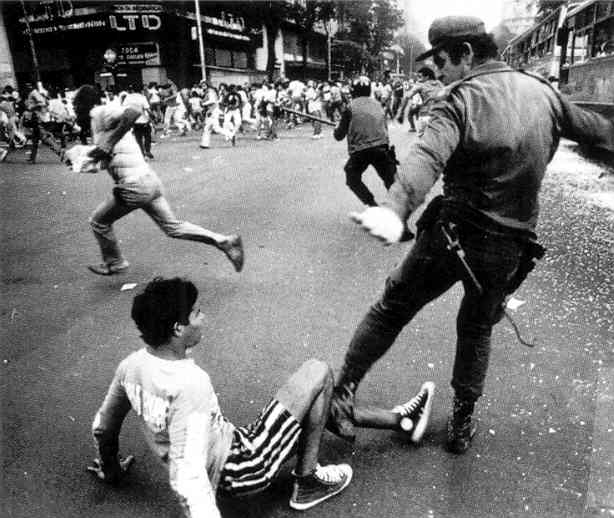
Deep economic troubles in
Brazil: Riots over bus-fare hike in Rio - 1987
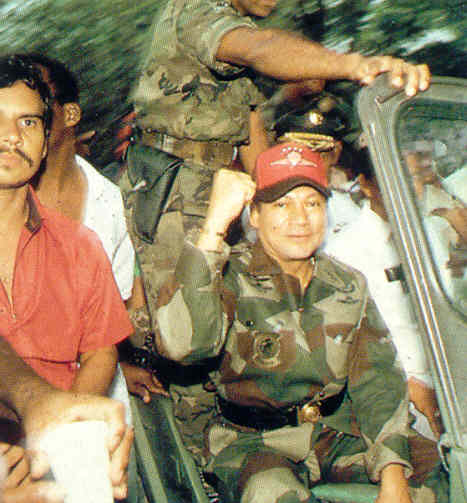
Panamanian dictator Manuel
Noriega
before being deposed by
an American military invasion in December of 1989
Violence in Central America (El Salvador) accompanies this demographic stress
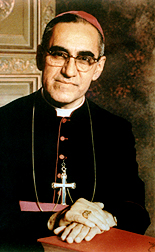
Salvadoran Archbishop Oscar
Romero - assassinated while conducting mass on March 24, 1980 after urging Salvadoran
soldiers not to obey the commands of their officers to murder civilians.
At his funeral 42 mourners
were shot down by army snipers ... to intimidate his followers.
Five Salvadoran women tortured and killed by an ultra-conservative death squad - 1980
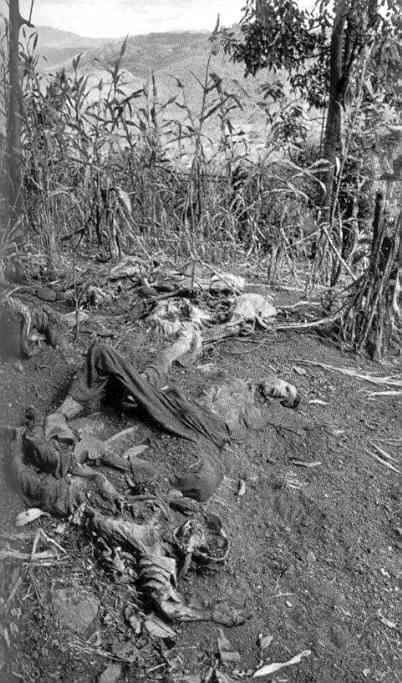
Some of the victims of the
El Mozote massacre in 1981 (reports were denied by
the US-backed regime; records and remains of 794
victims were finally uncovered in 1991
- almost half of them children)
Troops clear dead Leftists
from the streets of suburban San Salvador - 1982
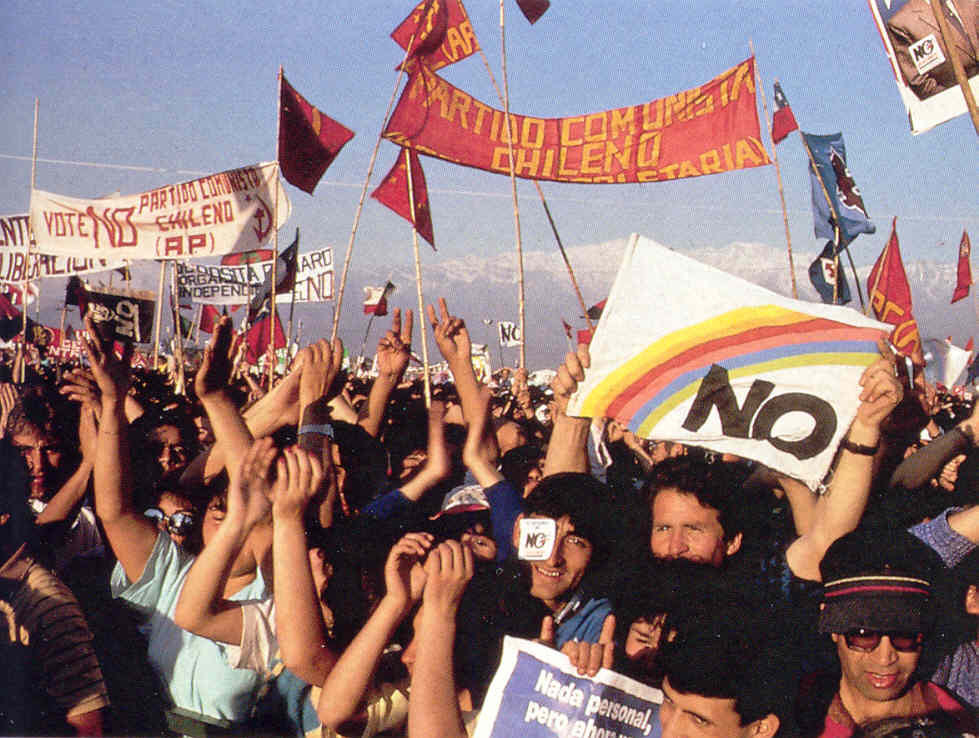
Anti-Pinochet demonstrations in Chile - late spring 1989
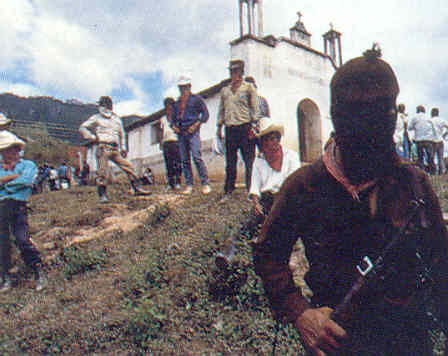
Zapatista guerrillas in Chiapas, Mexico - October 10, 1996
THE
MIDDLE EAST REMAINS A REGION OF TURMOIL |
| Mounting anti-Westernism
/ anti-Americanism in the Middle East Over the years since the
overthrow
of the Shah of Iran in 1979 Islam had taken on an increasingly militant
anti-Western stance. Whatever Arabs, Iranians, Turks, etc. had hoped
that copying Western culture might yield, by the 1980s they had begun to
lose confidence in that hope. They were also very bitter about the
treatment of their fellow Arabs, the Palestinians, who had been run out
of their homes, their shops and their farms – to make way for Western Jews
pouring in from Europe after World War Two. The fact that the West,
and America in particular, always seemed to take the Jewish or Israeli
side – supporting Israel with guns, tanks and airplanes (though the Israelis
soon developed a number of armaments industries of their own) – angered
the Arabs deeply. Finally, seeing America helplessly lose its most
faithful ally in the Middle East, the Shah of Iran, and equally helplessly
unable to do anything about the fervently anti-American Islamic Republic
that replaced the Shah’s government, served to greatly embolden a growing
number of Islamic jihadists who vowed to inflicting as much pain and death
as possible on the West, and in particular the ‘Great Satan,’
America. A number of Arab states (Egypt, Libya, Syria, Iraq), actually quite secular in character (Arab ‘Socialist’), had taken strong anti-Western positions with the growing Arab irritation with the Israeli ‘intrusion.’ They had engaged Israel in war several times from the 1950s through the 1970s. Egypt. However, since the time of Egyptian President Anwar as-Sadat in the mid 1970s – and after his assassination by Muslim fundamentalists in 1981 with the presidency of Hosni Mubarak - Egypt turned to the West, principally the United States for close friendship. Both of these Egyptian presidents, whose regimes were quite secular in nature, well understood the dangers of Islamic fundamentalism, the need to have peaceful relations with Egypt’s neighbor Israel, and the need for the vital support of the United States to give muscle to this policy. Libya. With the cooling
of Arab nationalism in Egypt there was almost an automatic transfer of
radical nationalism next door to Libya. Under the presidency of a
young Muammar al-Gaddafi, Libya became a ‘socialist’ state with a very
strong pro-Soviet orientation. He came down hard on Italians living
in Libya (former colonials who now had to flee the country) and any intellectuals
opposing him or his policies (many were murdered abroad by special Libyan
agents). His country became a haven for radicals of all sorts – Irish,
German, Japanese as well as Arab terrorist groups – and he financed a number
of other anti-Western terrorist groups around the world. In 1986
Gaddafi had been behind the bombing of a Berlin discotheque which a number
of US soldiers frequented – and Reagan retaliated by sending patrol boats
into the Gulf of Sidra – which the Libyans fired on. This in turn
led to a massive air attack on Gaddafi’s presidential palace (April 1986).
The United Nations howled and passed a resolution condemning the United
States for this attack. But a number of countries stood with the
United States. And the Soviet Union spoke out against the attack
– but was unwilling to give any comfort to Libya because the Soviets themselves
were becoming concerned about some of the rogue actions of their Libyan
ally. This event began the backing away of Soviet support for
Libya. The PLO. But with time the real struggle for Arab rights would be fought not by Arab states but by non-state organizations that had no official location in the Middle East, but simply drifted back and forth across Arab national boundaries in conducting their anti-Israeli, anti-West, anti-American ‘missions.’ The oldest of such Arab non-state organizations in the Middle East (formed in the 1960s) was the Palestinian Liberation Organization (PLO). It was officially sponsored by the Arab League and supported financially by a number of Arab states. Its mission was more particularly focused on removing the Jewish ‘intruders’ from the PLO’s homeland, Palestine. Hizbollah. Another Arab organization, Hizbollah, grew up in the early 1980s and reflected a new Shi’ite militancy coming from Iran after the Shah’s overthrow. [Iran was/is staunchly Shi’ite, whereas the rest of the Muslim Middle East tends to be Sunni; the two wings of Islam have an intense dislike of each other.] Indeed, Hizbollah was formed up with the help of Iran for the purpose of supporting the Shi’ites living in multi-ethnic Lebanon (Sunnis, Druzes, Christians and others, as well as Shi’ites). Hamas. Then later in the 1980s a new Palestinian group, Hamas, came forward as it began to appear that the PLO was willing to work out some kind of compromise with Israel to share Palestine. Hamas refused adamantly to enter into any such compromise. Hamas was much less ‘secular’ than the PLO and more militantly ‘Islamic’ in its ideology – a sign that the Islamic faith was beginning to upstage ethnic ‘Arabness’ as the basis for political identity in the Middle East. |
Egyptian President Anwar
Sadat assassinated by Muslim fundamentalists - October 6, 1981.
Egyptian President Anwar
Sadat assassinated by Muslim fundamentalists - October 1981
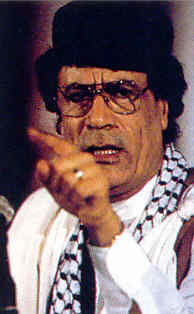
Libyan dictator Muammar al-Qaddafi
- 1981
The Intifida (Arabic for "shaking off") reaches
Jerusalem when Arab shopkeepers
shut down their shops
in protest against the Israeli
occupation - December 12, 1987.
(I arrived in Jerusalem just days after the protests began!)
Stone-throwing Arabs involved
in the intifada, which started up in December of 1987.
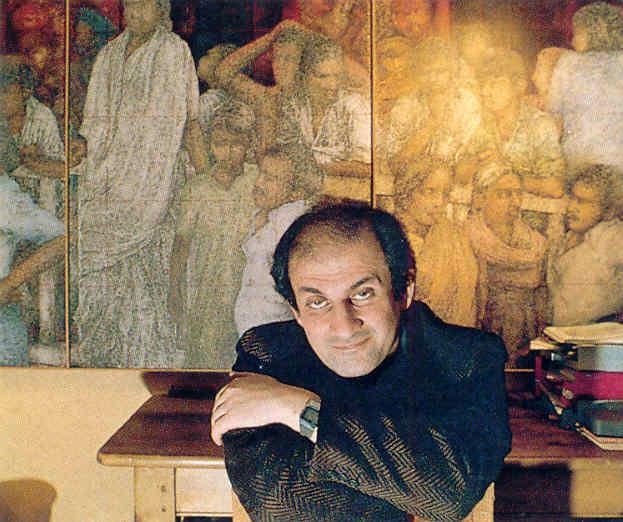
Salman Rushdie, author of
The Satanic Verses. The book drew for himself
a death warrant issued by Iran's theocratic dictator, the Ayatollah Khomeini,
in 1989.
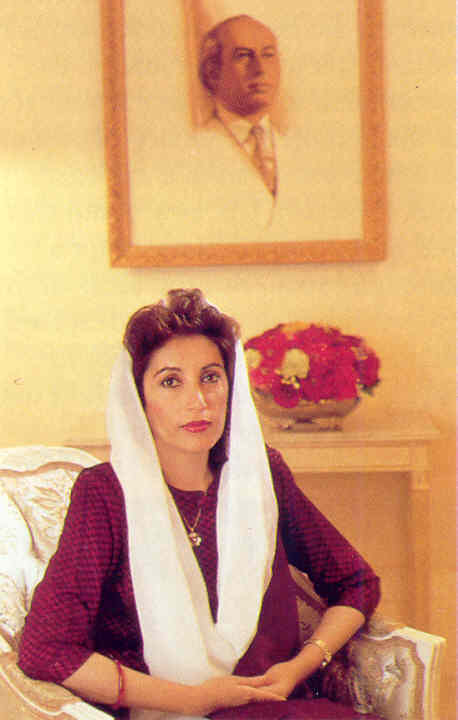
Pakistani Prime Minister Benazir Bhutto - 1988-1990 and 1993-1996
The Kurds still struggle to secure for themselves a national homeland (from Turkey, Iraq and Iran)
Burying a Kurdish child in
a refugee camp in Turkey -1991
Afghanistan continues to be torn by deep tribal-ethnic and cultural divisions
Afghan woman mouring her brother killed in the Afghan civil war - 1996AFRICA
REMAINS NO LESS A SAD CONTINENT OF ETHNIC STRIFE |
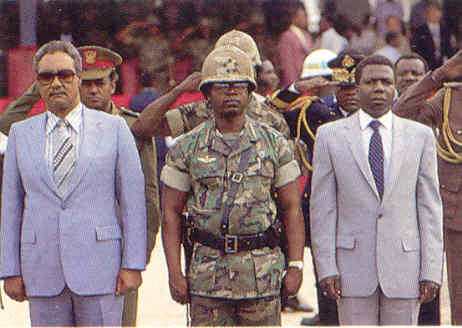
Liberian dictator Samuel Doe (1980-1990) ... overthrown and executed in September 1990
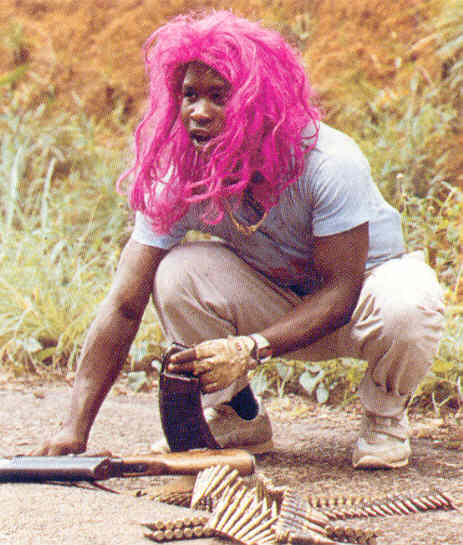
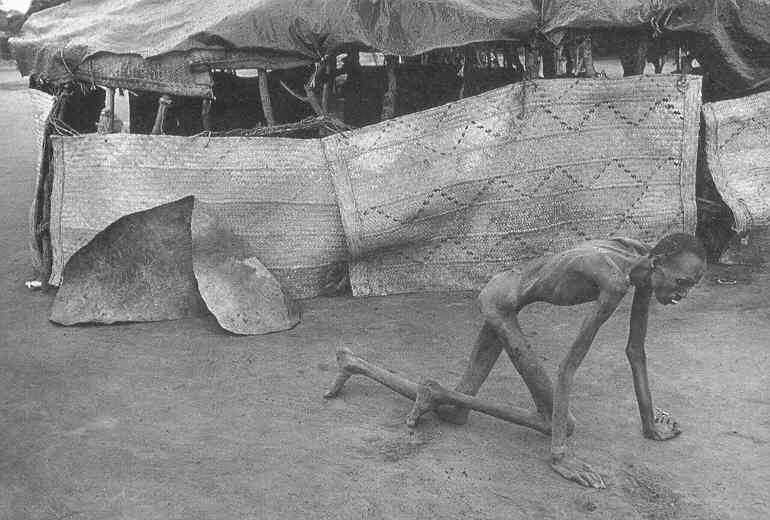
HINDU-MUSLIM
ETHNIC HOSTILITIES BREAK OUT AGAIN IN THE INDIAN SUB-CONTINENT |
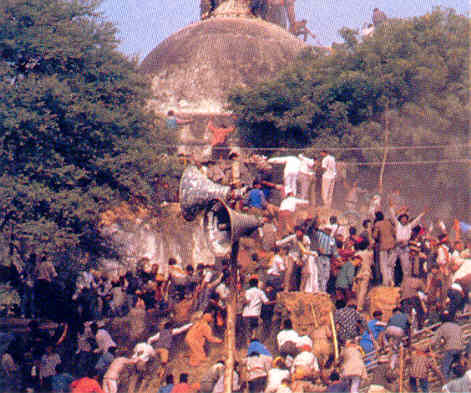 Hindu militants destroying
mosque in Ayodhya - 1993
Hindu militants destroying
mosque in Ayodhya - 1993DEMOCRACY IN THE PHILIPPINES - AND EVEN IN SOUTH KOREA - FINDS ITSELF UNDER CHALLENGE |
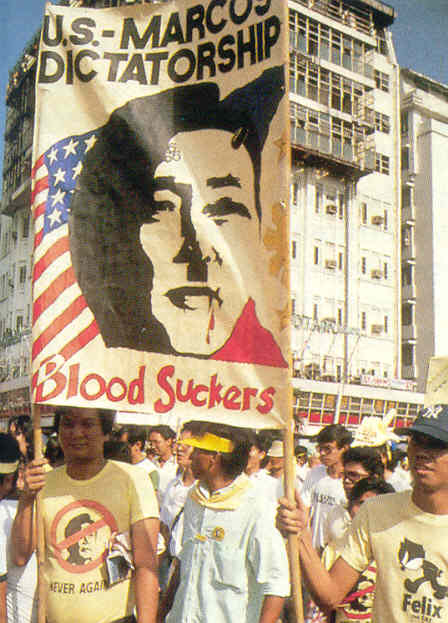
Anti-Marcos demonstrations
in Manila - 1986 He was finally deposed
following a very fraudulent election in February 1986 when some of the military
backed a popular uprising by pro-Aquino Filipinos)
Police confront students at Seoul's Yonsei University protesting Korean President Chun's electoral manipulations - 1987
AFRICA BEGINS AN AMAZING TRANSITION FROM WHITE TO BLACK RULE |
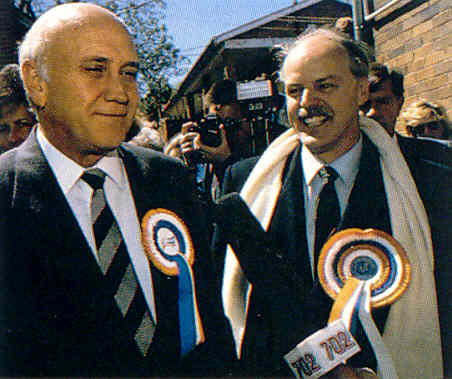
South African President F.W. De Klerk campaigning in 1989
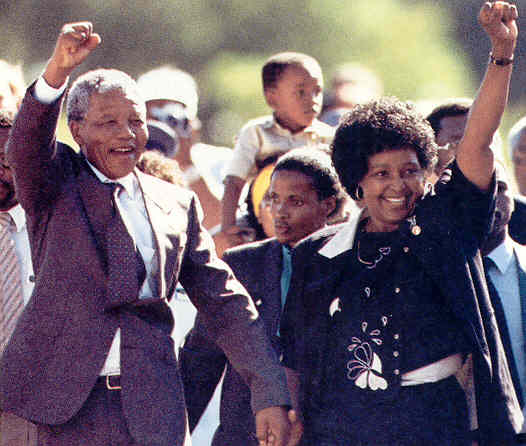
Nelson and Winnie Mandela
upon his release from prison - February 1990 -- after 27 years in prison
Nelson and Winnie Mandela celebrating his release from 27 years of prison - February 11, 1990
ETHNIC TENSIONS EVEN CHALLENGE EUROPE DEEPLY |
With the collapse of the Communist government in Albania - panic hits the Albanian population
Albanian refugees flooding into the port of Bari, Italy - August 8, 1991 as the Communist government of Albania breaks down
A
TRAGEDY OF A DIFFERENT SORT WAS THE DEATH OF PRINCES DIANA |
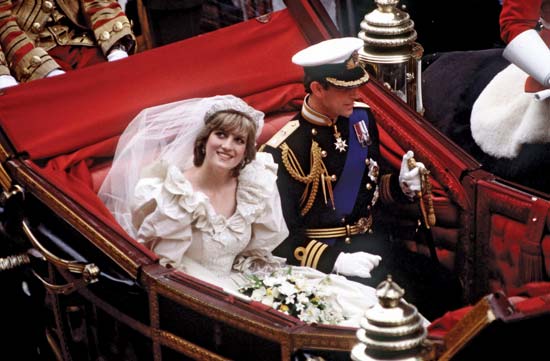
July 1981 - Diana and Charles started off with such high hopes
Diana, Princess of Wales, and Mother TeresaDiana definitely brought both glamor and dignity to British leadership. But their were deep relational problems going on between the royal couples.
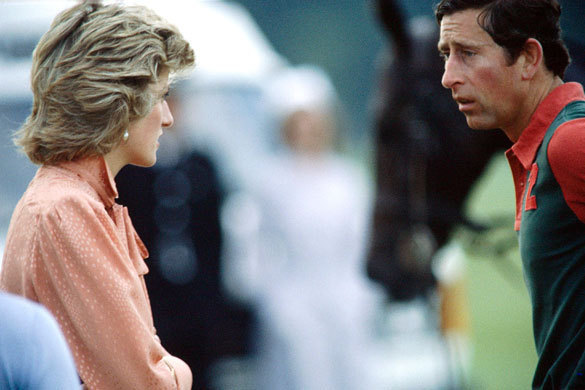
Princess Diana and Prince Charles - divorced in August of 1996
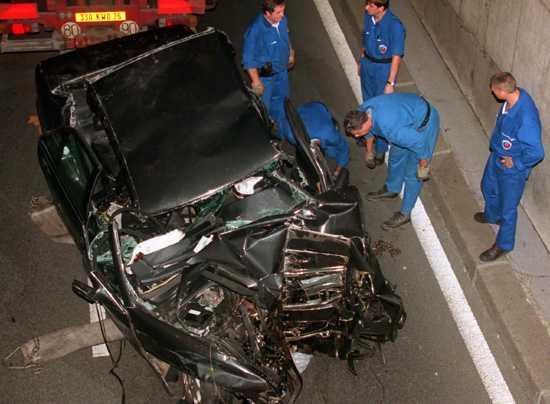 The death of Princess Diana
in a car crash in a Paris tunnel in August 1997 plunged Britain into mourning
and launched a raft of conspiracy theories
The death of Princess Diana
in a car crash in a Paris tunnel in August 1997 plunged Britain into mourning
and launched a raft of conspiracy theories

